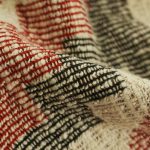When you’re out hiking in the desert, choosing the right fabric can make all the difference. You need materials that breathe, wick moisture, and protect against harsh UV rays. Fabrics like polyester and merino wool are often recommended, but have you considered the role of lighter colors and design features? Understanding these elements can enhance your comfort and safety on the trail. What options will keep you cool and shielded from the sun?
Table of Contents
Key Takeaways
- Choose lightweight, moisture-wicking fabrics like polyester for breathability and comfort during hot desert hikes.
- Opt for UPF-rated materials to effectively block harmful UV rays and reduce sun exposure risk.
- Consider merino wool for its temperature control, ensuring comfort in varying desert temperatures.
- Look for clothing with ventilation features, such as zippers or mesh panels, to enhance airflow and regulate body temperature.
- Select light-colored fabrics to reflect sunlight, helping to keep you cooler while hiking in the desert.
Understanding Fabric Properties for Desert Conditions
When you’re trekking through the desert, understanding fabric properties is vital to keeping cool and comfortable.
Look for lightweight materials that breathe well, allowing sweat to evaporate quickly. Fabrics with moisture-wicking properties help draw sweat away from your skin, preventing that sticky feeling.
UV protection is essential; opt for materials that offer a high UPF rating to shield your skin from harmful rays. Additionally, consider the color of your clothing; light colors reflect sunlight, keeping you cooler compared to darker shades.
Finally, think about durability; the desert can be harsh, so choose fabrics that can withstand rough conditions without tearing easily.
The Benefits of Polyester for Hikers
When you’re hiking in the desert, polyester can be your best friend.
Its moisture-wicking properties keep you dry, while its durability and resistance to wear guarantee it lasts through tough conditions.
Plus, polyester’s quick-drying advantages mean you won’t be bogged down by sweat or unexpected splashes.
Moisture-Wicking Properties
While hiking in the desert, staying dry is vital for comfort and performance, and that’s where polyester shines. This fabric’s moisture-wicking properties pull sweat away from your skin, keeping you dry even in the heat.
As you trek, polyester helps regulate your body temperature by allowing sweat to evaporate quickly, which prevents that sticky feeling that can distract you from enjoying the stunning scenery.
Unlike cotton, which absorbs moisture and can weigh you down, polyester dries faster and remains lightweight. You’ll appreciate how fresh you feel, even after a long day on the trail.
Plus, its breathability guarantees you stay cool when the temperatures rise. Choose polyester, and you’ll hike with confidence, knowing you’re equipped for the desert’s challenges.
Durability and Resistance
Although desert hiking presents unique challenges, the durability and resistance of polyester make it an ideal choice for outdoor enthusiasts. This fabric stands up to the rough terrain, resisting abrasions and tears that can occur on rocky trails. Polyester also offers excellent UV resistance, protecting your skin from harmful sun exposure during long hikes.
| Feature | Benefit | Importance |
|---|---|---|
| Abrasion Resistance | Stands up to rough terrain | Extends lifespan of gear |
| UV Protection | Shields from sun damage | Reduces skin burn risk |
| Lightweight | Easy to carry | Enhances mobility |
Choosing polyester for your hiking gear guarantees you stay protected and comfortable, letting you focus on enjoying the trail ahead.
Quick-Drying Advantages
One of the standout features of polyester is its quick-drying capability, making it a top choice for desert hikers.
When you’re trekking under the scorching sun, staying dry is essential for comfort and performance. Polyester wicks moisture away from your skin, allowing sweat to evaporate rapidly. This means you won’t be weighed down by damp clothes, which can lead to chafing and discomfort.
Plus, quick-drying fabric helps regulate your body temperature, keeping you cooler during those intense midday hikes. Unlike cotton, which retains moisture, polyester guarantees you stay dry and light on your feet.
Why Cotton Can Be a Suitable Choice
When you’re hiking in the desert, cotton can actually be a comfortable option.
It offers natural UV protection while allowing for excellent breathability and airflow, helping you stay cool.
Comfort in Hot Climates
Cotton can be a surprisingly comfortable choice for desert hiking, especially in hot climates. Its soft texture feels great against your skin, reducing irritation during long treks. Unlike synthetic fabrics, cotton breathes well, allowing air to circulate and helping you stay cooler.
When you’re out in the blazing sun, cotton absorbs sweat, which can help keep you feeling less sticky and more comfortable. Additionally, cotton’s lightweight nature makes it easy to pack and wear. You won’t feel weighed down by heavy materials, and the natural fibers provide a relaxed fit.
Just remember, while cotton’s comfort is undeniable, it can take longer to dry if you sweat a lot. Overall, it’s a solid choice for casual hikes in hot desert conditions.
Natural UV Protection
While many hikers prioritize lightweight and breathable materials for desert conditions, natural fabrics like cotton also offer an unexpected benefit: protection from harmful UV rays.
Cotton’s inherent structure provides a level of UV resistance that synthetic materials mightn’t match. When you wear cotton, you’re not just prioritizing comfort; you’re also creating a barrier against sun exposure. This can be especially important during long hikes when you’re exposed to direct sunlight for hours on end.
Additionally, cotton’s ability to absorb moisture can help keep you feeling cooler, allowing you to enjoy your trek while minimizing sun damage.
Breathability and Airflow
Although many hikers lean towards synthetic fabrics for their breathability, cotton can also be an excellent choice for airflow in desert conditions. Its natural fibers allow air to circulate freely, helping to keep you cool.
Unlike some synthetics, cotton absorbs moisture, which can be beneficial when you’re sweating under the sun. This absorption helps to evaporate sweat, providing a cooling effect as the water evaporates.
Keep in mind that while cotton might retain moisture longer than synthetics, it’s still a solid option for dry heat, especially when you’re not expecting rain. Just choose lightweight cotton to enhance your comfort.
Merino Wool: The Versatile Fiber
Merino wool stands out as a top choice for desert hiking, thanks to its unique blend of properties that cater to the demands of the harsh environment. This versatile fiber regulates temperature, keeping you cool when it’s hot and warm during cooler nights. It’s also lightweight and moisture-wicking, guaranteeing you stay comfortable on long treks. Plus, merino wool’s natural odor resistance means you can wear it longer without feeling self-conscious.
| Feature | Benefits |
|---|---|
| Temperature Control | Keeps you cool or warm |
| Moisture Management | Wicks sweat away |
| Odor Resistance | Stays fresher longer |
| Softness | Comfortable against the skin |
| Lightweight | Easy to pack and carry |
Incorporating merino wool into your gear guarantees you’re well-equipped for desert adventures.
Importance of UPF Rated Fabrics
When you’re hiking in the desert, protecting your skin from the sun should be a top priority, which is where UPF rated fabrics come into play.
UPF stands for Ultraviolet Protection Factor, and these fabrics are specifically designed to block harmful UV rays. When you wear UPF rated clothing, you greatly reduce your risk of sunburn and long-term skin damage, allowing you to enjoy your hike safely.
Unlike regular fabrics, which may let some UV rays through, UPF rated options offer a measurable level of protection. This is vital in the desert, where the sun’s intensity can be relentless.
Natural vs. Synthetic: Weighing the Options
As you prepare for a desert hike, choosing between natural and synthetic fabrics can greatly impact your comfort and performance.
Natural fabrics like cotton and linen are breathable and soft against your skin, but they can hold moisture and dry slowly, which isn’t ideal in hot, dry conditions.
Natural fabrics like cotton and linen offer breathability and softness, but their slow drying times can be a drawback in hot, dry climates.
On the other hand, synthetic fabrics such as polyester and nylon wick moisture away, dry quickly, and often provide better UV protection. They’re lightweight and durable, making them excellent for outdoor activities.
However, some may find synthetics less comfortable, especially in extreme heat.
Ultimately, you’ll want to weigh the pros and cons based on your personal preferences, the hike duration, and the specific weather conditions you expect to encounter.
Essential Clothing Design Features for Comfort and Protection
To guarantee comfort and protection during your desert hike, it’s crucial to take into account specific clothing design features. Look for lightweight materials that wick moisture and allow airflow. Opt for long sleeves and pants to shield your skin from the sun, while ensuring they have UPF protection. Ventilation zippers can help regulate temperature when it heats up. Finally, consider pockets for easy access to essentials.
| Feature | Benefits | Recommendations |
|---|---|---|
| Moisture-wicking | Keeps you dry | Synthetic blends |
| UV Protection | Shields skin from sun damage | UPF-rated fabrics |
| Lightweight Design | Reduces heat retention | Quick-dry materials |
| Ventilation | Enhances airflow | Mesh panels |
Frequently Asked Questions
Can I Wear Jeans for Desert Hiking?
Wearing jeans for desert hiking is like trying to run a marathon in a sauna. They trap heat and moisture, making you uncomfortable. Opt for lightweight, breathable fabrics that keep you cool and protected from the sun.
How Often Should I Change My Hiking Clothes?
You should change your hiking clothes whenever they get sweaty, dirty, or uncomfortable. Frequent changes help prevent chafing and maintain your comfort. Listen to your body, and don’t hesitate to freshen up during your hike.
What Are the Best Colors for Desert Hiking?
Did you know light-colored clothing reflects up to 80% of sunlight? For desert hiking, opt for whites, tans, or pastels to stay cooler. Avoid dark colors, as they absorb heat and can increase discomfort.
How Do I Care for My Hiking Fabrics?
To care for your hiking fabrics, wash them in cold water with mild detergent, avoid fabric softeners, and air dry. Check for specific care instructions, since different materials may have unique requirements for longevity.
Should I Wear a Base Layer in the Desert?
Yes, you should wear a base layer in the desert. It helps wick moisture away, keeping you cooler and more comfortable. Just choose lightweight, breathable materials to guarantee you stay protected while enjoying your hike.
- The Ultimate Guide to China’s Textile Industry Landscape - June 20, 2025
- How to Vet and Choose a China-Based PCB Fabrication Manufacturer - June 20, 2025
- Exploring the Beauty of Printed Silk Crepe De Chine Fabric - June 20, 2025







